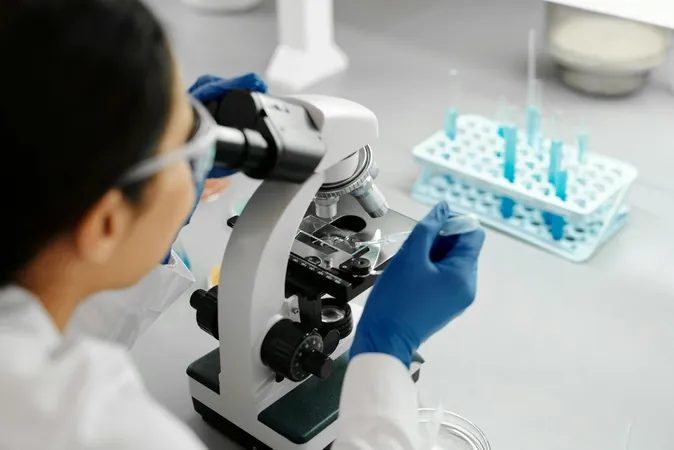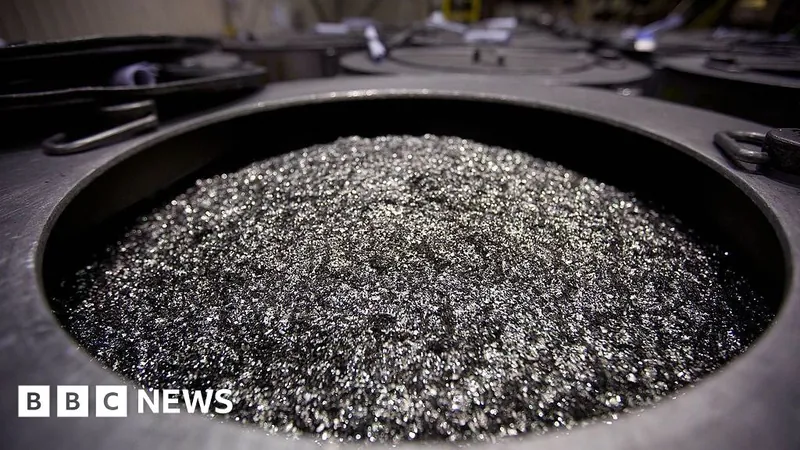
Groundbreaking Findings Reveal Bacteria's Ancient Relationship with Oxygen
2025-04-07
Author: Liam
Groundbreaking Findings Reveal Bacteria's Ancient Relationship with Oxygen
In a landmark study, researchers from the HUN-REN Center of Ecological Research (HUN-REN CER) have unveiled astonishing new insights into ancient bacteria and their intricate relationship with oxygen. A collaboration of international experts, including Hungarian scientists, has meticulously traced the evolution and adaptation of these microorganisms over billions of years. The findings, published in the prestigious journal Science, challenge previous notions about the history of life on Earth.
The research aimed to pinpoint when major bacterial groups emerged and to reconstruct their ability to utilize oxygen—a crucial element for the evolution of complex life. Central to this study was the Great Oxidation Event (GOE), which occurred approximately 2.33 billion years ago. This pivotal era marked a dramatic increase in atmospheric oxygen levels, primarily due to photosynthesis conducted by cyanobacteria.
Traditionally, establishing timelines for such developments has proved formidable, primarily due to the limited fossil record. However, the investigative team employed innovative methodologies, integrating geological and genetic data. Utilizing advanced machine learning techniques, they identified ancient aerobic bacteria and applied Bayesian statistical analyses to estimate their emergence post-GOE.
Through this comprehensive approach, the team reconstructed the evolutionary history of 1,007 bacterial genomes, identifying 84 transitions between anaerobic and aerobic lifestyles. While most of these shifts occurred after the GOE, evidence suggests that some bacteria adapted to oxygen long before it became abundant—some nearly 900 million years prior to significant atmospheric oxygenation.
These startling revelations imply that certain bacteria possessed the mechanisms to utilize oxygen earlier than previously understood. Furthermore, the data propose that these primitive bacteria might have paved the way for essential genetic advances that ultimately led to the development of photosynthesis.
The study also suggests that the common ancestor of all contemporary bacteria existed between 4.4 and 3.9 billion years ago, during Earth's formative years. Major bacterial groups began to surface between 2.5 and 1.8 billion years ago, a period marked by significant environmental changes. Notably, many of the bacterial families we recognize today began to evolve roughly 600 to 750 million years ago, coinciding with the emergence of both animal and plant life.
One of the key methodological advancements in this research was the combination of genetic information, fossil evidence, and geochemical data. This novel approach enhances our understanding of early microbial evolution, particularly for organisms lacking a fossil record. Researchers believe that this methodology may prove crucial for exploring the properties of other microorganisms in the future.
As we delve deeper into the evolutionary history of life on Earth, this study sheds light on the resilience and adaptability of bacteria, revealing their remarkable capacity to thrive even in an oxygen-sparse environment. The implications of these findings may reshape our understanding of ancient ecosystems and the origins of life itself.
Stay tuned for more astonishing discoveries that could redefine everything we know about our planet’s biological heritage!









 Brasil (PT)
Brasil (PT)
 Canada (EN)
Canada (EN)
 Chile (ES)
Chile (ES)
 Česko (CS)
Česko (CS)
 대한민국 (KO)
대한민국 (KO)
 España (ES)
España (ES)
 France (FR)
France (FR)
 Hong Kong (EN)
Hong Kong (EN)
 Italia (IT)
Italia (IT)
 日本 (JA)
日本 (JA)
 Magyarország (HU)
Magyarország (HU)
 Norge (NO)
Norge (NO)
 Polska (PL)
Polska (PL)
 Schweiz (DE)
Schweiz (DE)
 Singapore (EN)
Singapore (EN)
 Sverige (SV)
Sverige (SV)
 Suomi (FI)
Suomi (FI)
 Türkiye (TR)
Türkiye (TR)
 الإمارات العربية المتحدة (AR)
الإمارات العربية المتحدة (AR)